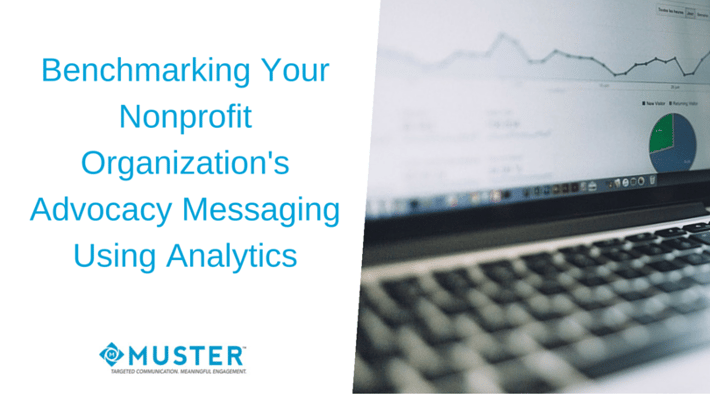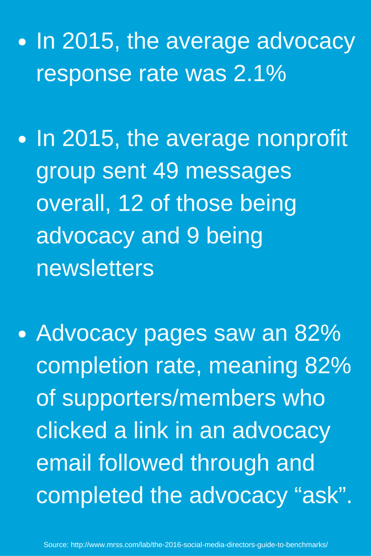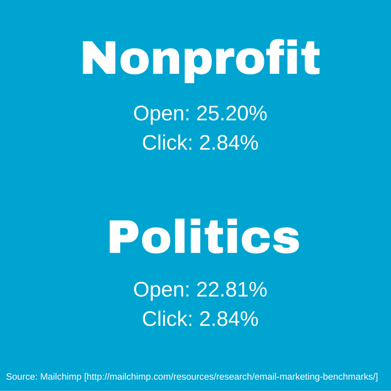
In a report published by the technology “thinktank” Lincoln Initiative, innovators state that “if organizations don’t embrace a digital and analytics oriented strategy, their respective issue...will be left behind”. If your organization is not incorporating data (and analysis) to inform its staff’s decision-making process on advocacy strategy, it’s time to start. Digital advocacy efforts that lack a way to track and measure advocate engagement, email data, and other important metrics hinder your government relations team from making informed or strategic decisions. In a data-driven world, the analytics behind digital advocacy efforts are nearly as important as the initiatives themselves.
While quantitative data is valuable in and of itself, the numbers are not what provide your organization with game-changing revelations about how to execute successful advocacy campaigns. Data analysis is what propels your organization to new advocacy heights. Analysis adds an important dimension to crafting the narrative supporting your digital advocacy initiatives and understanding your influence. A deeper understanding of your supporters will allow you to develop targeted advocacy messaging that will better resonate with your audience, while learning more about how frequently your supporters prefer being contacted.
How do you motivate your supporters and members to participate in your political advocacy initiatives? How do you keep these advocates engaged and informed, without spamming their email inboxes?
Digital advocacy tools can provide your organization with data on your advocacy efforts, helping you understand which of your advocacy campaigns resonate most with your stakeholders. For example, if you see that 880 of your members opened the Action Alert email you sent them, yet only 350 of your members completed the Action Alert “ask” and contacted their legislator, you may learn that your email language wasn’t strong enough or the directions given were too vague, etc.
Analytics allow you to benchmark your organization’s digital success by comparing your nonprofit organization's messaging data against similar organizations also operating in the nonprofit world. Quantitative benchmarking will help you understand where your organization falls in the spectrum of online communications, allowing you to gather insight on which areas your organization can improve for greater advocacy success. A recent report published by a nonprofit strategy company, M+R, found the following advocacy-oriented data:
 Source: http://www.mrss.com/lab/the-2016-social-media-directors-guide-to-benchmarks/
Source: http://www.mrss.com/lab/the-2016-social-media-directors-guide-to-benchmarks/
MailChimp, an email service provider, extrapolated industry email standards that organizations can view to understand the performance of their own email communications. So, if you are a communications coordinator at an association or nonprofit and your Executive Director expresses dissapointment in a 5% click-through-rate, no worries. You are actually ahead of your industry standard! The following statistics reveal the average email data from nonprofit and political groups:
 Source: http://mailchimp.com/resources/research/email-marketing-benchmarks/ http://mailchimp.com/resources/research/email-marketing-benchmarks/
Source: http://mailchimp.com/resources/research/email-marketing-benchmarks/ http://mailchimp.com/resources/research/email-marketing-benchmarks/
Before we conclude, let's not forget about tracking new media because social media analytics also provide insight into the success of online advocacy efforts. It’s important to note that most social media channels grant you access to viewing the performance of your social media posts. If you’ve posted an Action Alert or advocacy Call to Action on Facebook or Twitter, you will be able to track how many people have “liked” or shared the post. While this information is important to evaluating the overall reach of your campaign, these types of engagements are not accurate measurements of how many of your supporters and members actually contacted their legislators about an issue.
While social media supports your advocacy campaign by extending the reach and influence of your mission-critical agenda, it is still important to track your organization's exposure with precision.To this end, a digital advocacy tool like Muster means the difference between estimating your campaign success to actually having hard data describing the success of your campaign.
Analytics. Data. Metrics. Small words, huge impact.